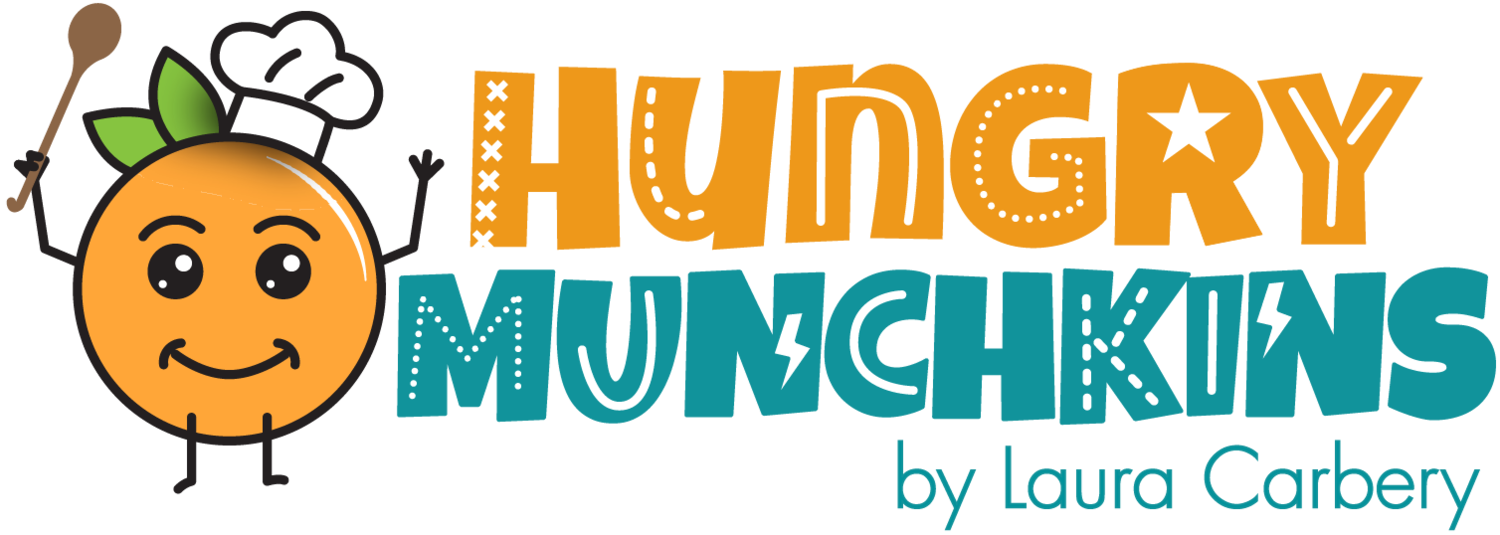Tips for Introducing Finger Foods to Your Baby
Here are my tips to help you feel prepared & excited about offering finger foods to your baby safely and effectively.
By Laura Carbery of Hungry Munchkins
Ready to start baby led weaning or introducing finger foods to your baby but you’re a little scared?
Introducing finger foods to your baby is an exciting and important milestone in their journey towards independent eating. Finger foods are essential for babies to learn the skills to eat, encourage co-ordination and to build muscles in their mouth for speech.
Finger foods can be introduced as early as 6 months if your baby is developmentally ready but for other babies it might be closer to 7-8 months of age.
Here are my tips to help you feel prepared & excited about offering finger foods to your baby safely and effectively:
1. Learn how to prepare finger foods in a safe and suitable way for your baby’s age and development.
Ironically for a 6–8-month-old baby, the bigger the piece of food, the safer it is from a choking perspective. The safest way to prepare finger foods for a 6–8-month-old baby is for the food to be cut to the length and width of 2 adult fingers and then cooked until its soft enough to squash with your hands.
Around 9 months of age, babies develop their pincer grip. The pincer grip gives babies the ability to pick up smaller pieces of food. As you baby’s eating skills and pincer grip develops, you can start decreasing the size of food from 9-12 months of age. You can begin to offer harder finger foods and smaller, bite-size pieces.
Babies at this age commonly over-stuff their mouths as they get more confidence in self-feeding. Here are my tips to help with baby’s who stuff their mouth too full with food.
2. Attend a Paediatric first aid course.
Attending a paediatric first aid course when starting your baby on solid foods is beneficial because it equips you with the knowledge and skills to respond effectively to potential emergencies that could arise during feeding and mealtimes.
3. Learn the difference between gagging and choking so that you can feel confident when feeding your baby and knowing if you need to intervene or not. Watch videos of babies gagging and eating different types of food! I know this might sound crazy but honestly, I think it’s really useful to watch what to expect and then if your baby gags it won’t seem so scary.
4. Desensitise your baby’s gag reflex by allowing them put things in their mouth. Avoid taking their hands out of their mouth. Allow them to chew long teething toys, baby spoons etc. This will help your baby practice & become familiar with the different sensations of different shapes & textures in their mouth which, in turn will help when they encounter similar sensations with food. This can be especially useful for babies with a very sensitive gag reflex.
5. Create a Safe Eating Environment: Choose a safe and comfortable highchair with a harness for your baby to explore and eat finger foods. Make sure your baby is always supervised while eating.
6. Model Eating: Sit with your baby during mealtimes and show them how to pick up and eat the finger foods. Babies often learn by imitating, so seeing you eat can encourage them to try the foods themselves.
7. Encourage Exploration: Place 2-3 finger foods within your baby's reach. Let them explore the textures, colours, and flavours. It's normal for babies to play with food initially; this is a part of learning about their food.
8. Monitor for Choking Hazards: Always be vigilant about potential choking hazards. Your baby’s or child’s windpipe is the size of a drinking straw in diameter. Avoid small, round, hard and slippery foods as these have the highest choking risk e.g., whole grapes, whole cherry tomatoes, whole nuts, popcorn, and chunks of meat.
9. Offer Variety: Introduce a variety of flavours and textures over time to expand your baby's palate. This will also help ensure they're getting a balanced diet.
10. Be Patient and Observant: Some babies may take time to adapt to finger foods. Be patient and don't force them if they're not interested.
Remember, every baby is different, and their readiness for finger foods can vary. Pay attention to your baby's cues and enjoy this exciting phase of their development.
If you have concerns about your baby’s development, don’t hesitate to consultant your GP or paediatrician for guidance.
If you’d like to learn more, join my weaning workshop online or in-person now!
Save yourself time and stress and get all the answers you need about starting solids in one class.
Option 1: Purchase & Watch the Baby Weaning Class in your own time.
Option 2: Attend a Live Online Baby Weaning Class with Laura.
Are you starting your baby on solid foods and finding it hard to know where to begin? It can be minefield with so much information out there.
My baby weaning class is designed to lay the foundations for healthy and happy eating. I will provide you with the latest evidence based information and lots of cooking tips to help during this important time.
You will leave the class feeling confident and prepared for feeding your baby from first tastes right up to feeding a toddler. This should be a fun time so I hope I can help you relax and enjoy the experience.
What’s included:
2 - 2.5 hour class with Laura
Detailed PDF Notes with advice, tips and recipes
Meal Planner
Cookery demonstration - showing easily family meals, finger foods and how to adapt meals for baby
Email support after the class





